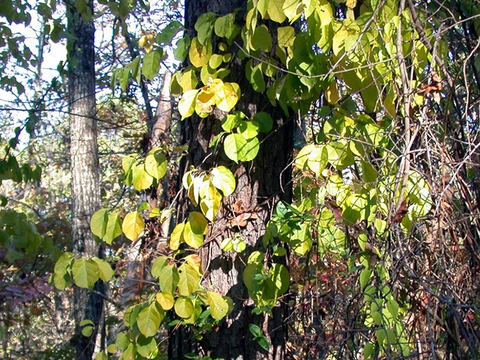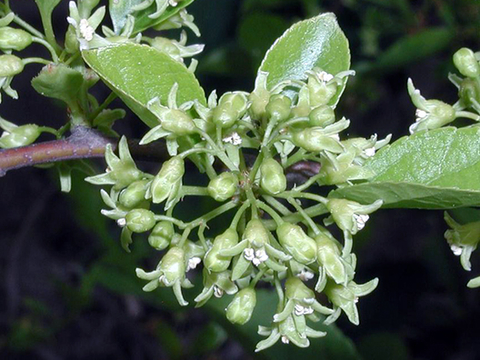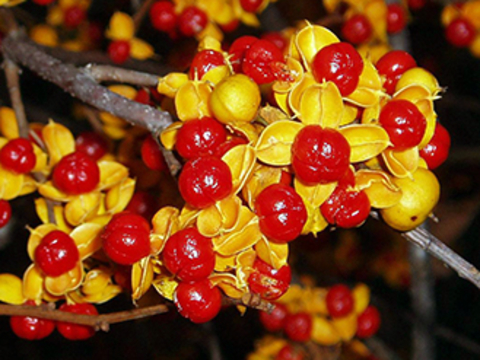Quick facts
Round leaf bittersweet (Celastrus orbiculatus - formerly known as Oriental bittersweet) is a Prohibited Noxious Weed (Eradicate List) in Minnesota. Above and below-ground parts of the plant must be destroyed. No transportation, propagation or sale of round leaf bittersweet and its varieties are allowed.
- Round leaf bittersweet is a vine that strangles and smothers forest stands.
- It dominates tree canopies and reduces light and available moisture for other vegetation.
- A large-scale mature infestation often contains dead trees covered by heavy, woody vines.
Report round leaf bittersweet:
- Email "Report a Pest" at reportapest@state.mn.us, or
- Call 651-201-6684 or 1-888-545-6684
How to identify round leaf bittersweet
- A thick and woody deciduous vine that can grow up to 66 feet.
- Light brown to grayish.
Leaves
- Alternate green leaves that turn yellow in the fall.
- They can be oblong to round in shape, 2 to 5 inches long, and 1.4 to 2 inches wide.
- Leaves are very variable and not a good identifier.
Flowers
- Separate male and female plants with flowers.
- Flowers are found in clusters of 2 to 7, with each flower having 5 petals.
- Flowers are the only way to positively identify male plants; males do not produce fruit.
Fruit and seeds
- Loose bunches of 3 to 7 yellowish, 3-parted capsules enclosing reddish berries are strung along the stem near the leaf axils.
- Berries have three segments containing 1 or 2 seeds each.
- Mature berries are red with yellow capsules in the fall and can persist all winter.
- Seeds can be carried by birds as they feed on berries.
Roots
- Vines can root where they touch the ground.
- Rhizomes can spread and send up new plants.
360-degree image of round leaf bittersweet
Use your cursor to move the image.
Reviewed in 2022




